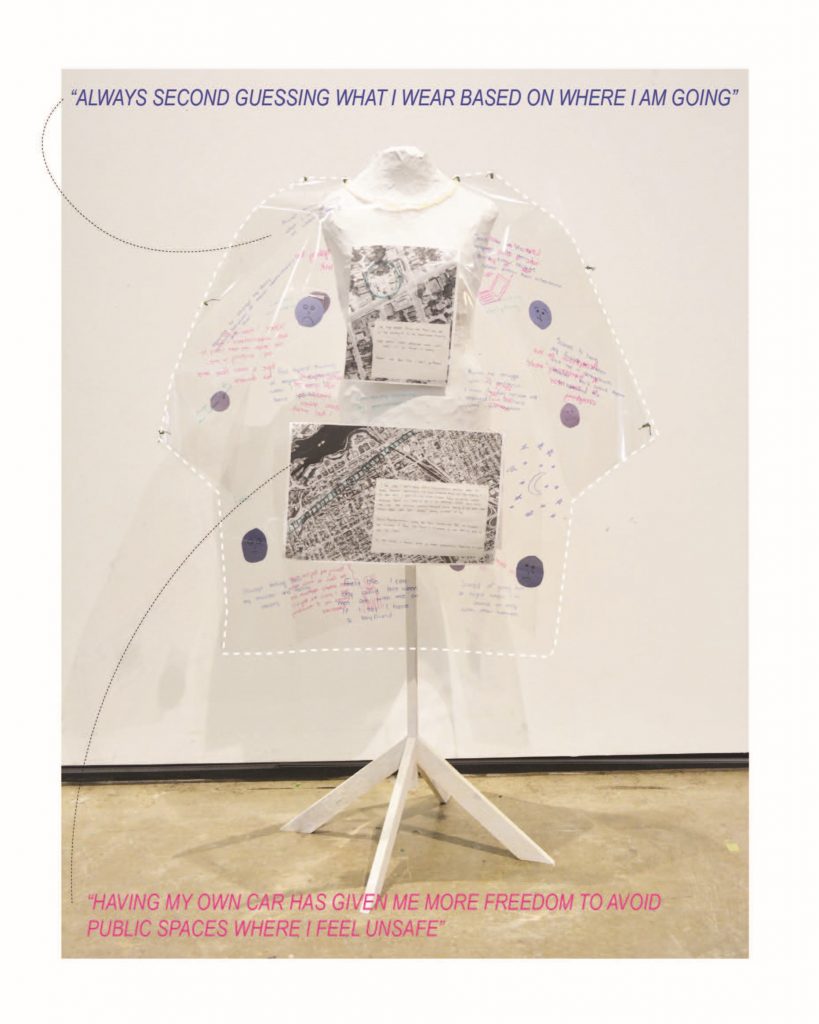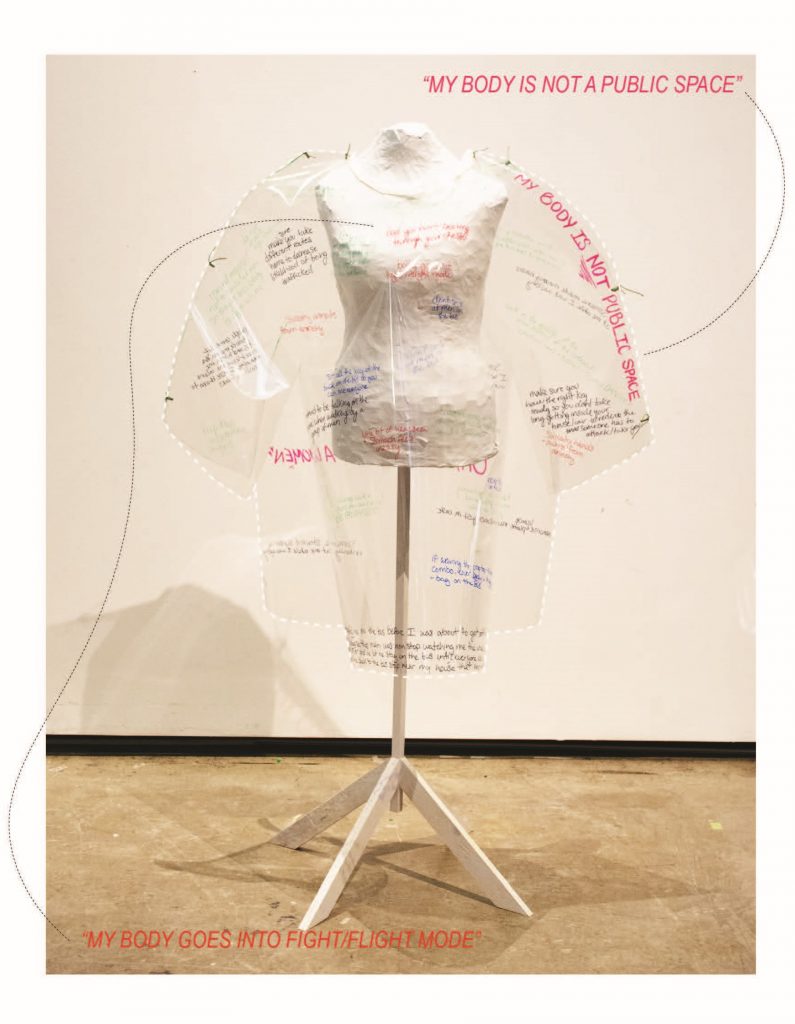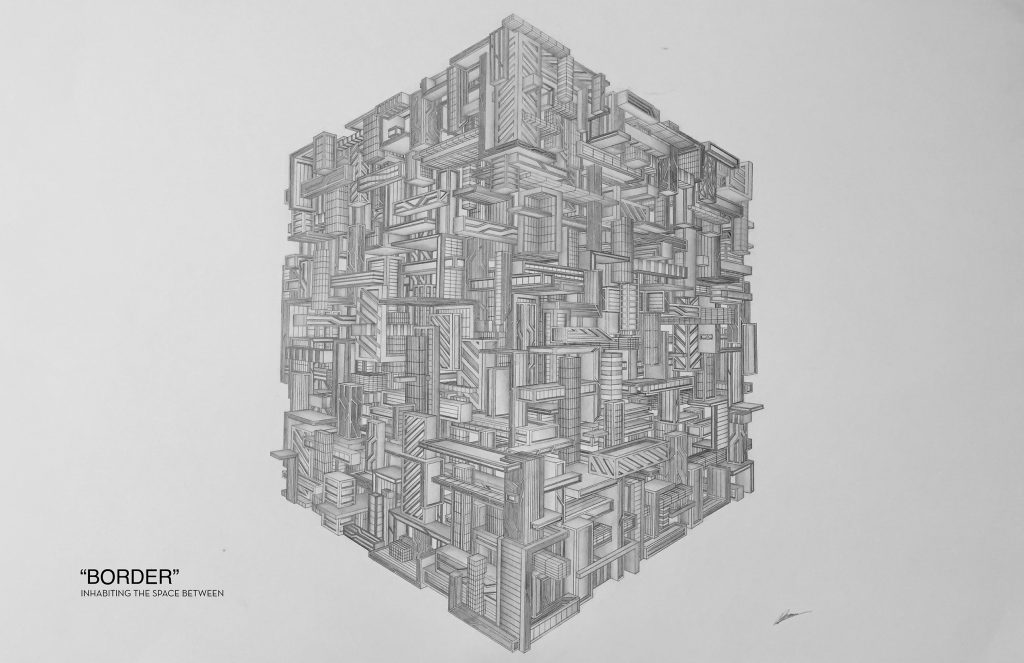Winners of the 2023 Marco Frascari Prize in Architecture for Drawing
April 28, 2023
Hilary Romaniuk and Cameron Penney, both of the MArch class of 2023, tied for first place in the Marco Frascari Prize in Architecture for Drawing. Each will receive $2,000.
Dan Vu, who has completed the first year of the MArch program, was awarded second place and will receive $1,000.
The 2023 competition invited students to consider Marco Frascari’s essay A New Angel/Angle in Architectural Research: The Ideas of Demonstration, and to speculate — through drawing — on the pursuit of “angelic standards.”
Jury members:
• Fiona Lim Tung, Assistant Professor, Teaching Stream at the John H. Daniels Faculty of Architecture, Landscape, and Design at the University of Toronto;
• Roberto Campos, Partner, Director Ottawa office of Figurr Architects Collective;
• Claudio Sgarbi, Architect and Adjunct Professor at the Azrieli School of Architecture & Urbanism.
First Prize # 1
A Body Map
Hilary Romaniuk
My submission to the Marco Frascari Prize in Architectural Drawing pushes the requirements of hand drawing on paper” and utilizes a non-traditional, radical, feminist mode of drawing called Body Mapping as a tool to research architecture and urban space. The (seven) drawings are part of my thesis project called The Body in the City: Understanding Sexual Harassment in Urban Outdoor Public Space, which aims to understand the question better; How does sexual harassment impact our bodies, lives, and perceptions of space, in public urban outdoor space. This study aims to centre the body as a priority by utilizing body mapping focused on various sites across Centretown in Ottawa. Body mapping is a visual-arts-based therapeutic process used during a communal workshop to examine, share, and visualize women+’s visceral experiences in the city. Ultimately, the mapping employed here makes women+’s struggle visible and seeks a better understanding of our positions, rights, and possibilities in public space. The drawings are three-dimensional (taking the shape of a body) and use clear plastic paper as a base.


Jury Comments: A Body Map is a deliberate provocation. First, it sparked a discussion on the nature of drawing — where was drawing (as a verb) or the drawing (as a noun) located in these images? In addition to the substance of the “drawing,” the semantic content caused one of the jurors to remark that it made them question their own perception of the neighbourhood under discussion. Is it no longer a safe place?
First Prize #2
Biogeochemical Toronto
Cameron Penney
The work explores the dialogue between the urban and the (truly) organic through a cartographic study of Toronto, Ontario. The drawing deconstructs a thesaurus of ecological processes that interact with the urban framework to augment information. This thesaurus includes historic landscapes that have since been turned to aggregate, chemical interactions of salt on infrastructure and water systems, and the urban geology of concrete as a buffer to natural cycles. The hand-drawn augmentation parallels the physical augmentation in Toronto that creates unintended trivial landscapes that disrupt the pre-existing biogeochemical cycles of their genesis. By relying on destructive resource extraction and a dedication to controlling the natural world, landscapes are concealed with an assemblage of homogeneous materials of human-made origin. These anthropocentric landscapes inhibit nutrient flow across abiotic and biotic cycles. This inhibition represents itself as broken circles and non-continuous flows in the drawing to highlight the issues of resource management within cities. A new standard is needed to relieve the planet from the stressors we place on it.

Jury Comments: The rich graphic texture of Biogeochemical Toronto draws the viewer in and then reveals an uneasy tension between our desire to maintain control over the world and our inability to do so — a difficult message delivered in a compelling package. The jury felt the mapping was sophisticated and the message timely.
Second Prize
Border
Dan Vu

Jury Comments: The jury was impressed with the craft of drawing and the discipline required to conceive and execute the work. Did digital technology play a role in the execution of this piece? Does it matter?
About the Marco Frascari Prize in Architecture
Dr. David Azrieli endowed the prize in 2013 in memory of Dr. Marco Frascari, who served as director of the Azrieli School of Architecture & Urbanism from 2005 until his death in 2013.
The annual drawing competition is open to graduate or post-graduate students who have completed at least one year of their program.
About the Jury
Fiona Lim Tung is a designer, researcher, and educator. She is currently a Lecturer at the University of Waterloo School of Architecture in Cambridge, Ontario, and Assistant Professor, Teaching Stream at the John H. Daniels Faculty of Architecture, Landscape, and Design at the University of Toronto.
Fiona’s research focuses on drawing as a form of resistance, new agendas in representation, design pedagogy, and the potential of architecture to contribute to more equitable futures.
Her design practice focuses on the potentials that exist in the overlap between high and low-tech fabrication methods in contemporary craft. Her design work has been published in magazines, in books, and exhibited in galleries nationwide.
Roberto Campos heads the Ottawa office of Figurr Architects Collective. He has 26 years of experience, including 12 with Figurr. In particular, he works on the design of recreational facilities, schools, and institutional and commercial buildings. Before joining the team, Roberto completed multiple projects with renowned architect Douglas Cardinal, including the Cree Cultural Institute Aanischaaukamikw, winner of the 2012 Grand Prix de Design (in collaboration with Rubin & Rotman Architects). Roberto is a lead architect on the high-profile Zibi Development on the Ottawa River in Ottawa and Gatineau. A graduate of the Azrieli School of Architecture & Urbanism, he is known for project management experience, design skills, and leadership.
Claudio Sgarbi is an architect with an extensive practice in the technical direction of construction sites and the administration of the building industry, along with parallel intensive research in the theory and history of architecture. He has taught in the master’s program in architecture at the University of Pennsylvania (1985-1993) and in the master’s program at Carleton University since 2009. At Carleton, he has also served as the director of STUDIO FIRST (2016), coordinator of Directed Studies Abroad (2010-2013), and a teacher and advisor in the PhD program in architecture. He is currently teaching theory and design at the Lebanese American University.